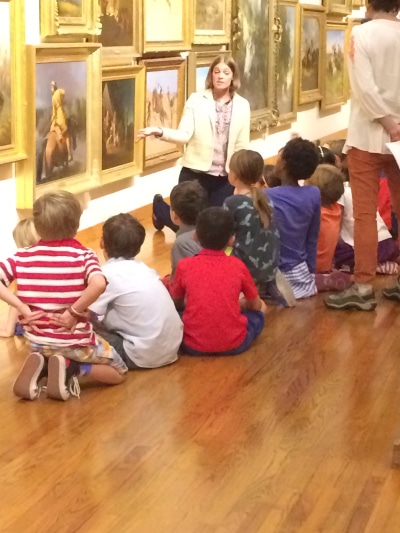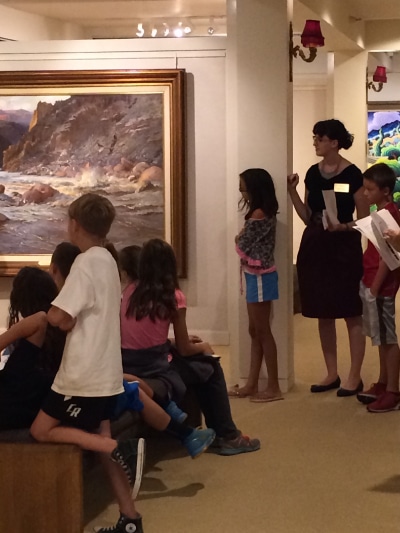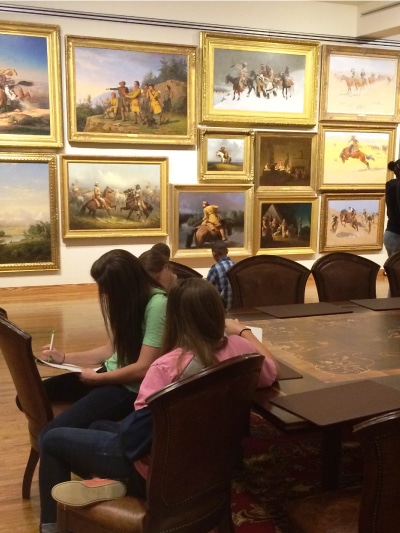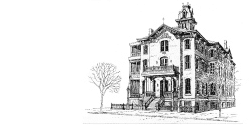Welcome Educators and Students
The American Museum of Western Art—The Anschutz Collection invites schools and educational organizations to our FREE online lesson and activity ideas or request a FREE virtual tour.
In accordance with new social-distancing guidelines AMWA is now offering free custom virtual tours. AMWA education specialists will work with educators to develop a custom tour or lesson to align with the current curriculum in class and what the educator hopes for their students to gain from it. AMWA staff will assist with choosing pieces in the Museum and develop a lesson adapted to the class.
Interested in free lesson and activity ideas?
Visit our Lessons & Activities page for teachers and students
Looking for information on a specific work in our collection?
AMWA education specialists can provide information on works in the Museum’s collection and how to incorporate them into a variety of lessons as a primary source. Please email info@AnschutzCollection.org to connect with an education specialist.
What and where is the American West?
At the beginning of the 19th century, lands west of the Mississippi, East of the Pacific Ocean, and North of the Rio Grande went through major political, environmental, and demographic changes in less than 100 years. In 1800 the bulk of this territory, the traditional home of many Native American tribes, was politically controlled by either France or Spain.
Beginning with the Louisiana Purchase of 1803, the United States began a process of territorial expansion through wars and treaties, encouraging its citizens to settle in the newly acquired territories. Eventually, by the early 20th Century, the political borders of the United States extended from the Atlantic to Pacific oceans in the organization that is familiar to us.
What is Western American Art?
Artists have been creating artwork in the western region of the North American continent for centuries. However, “Western American Art” refers to the art whose subject matter refers to this region and was produced by artists who came from a Euro-American stylistic and cultural heritage.
Historic Timeline
To view Western American paintings in the Museum’s collection in context with major historical, political, and social events, check out our Historic Timeline.
Lesson and Activity Ideas
The American Museum of Western Art—The Anschutz Collection displays over 300 paintings that survey 200 years of westward expansion. To make the breadth of our collection more digestible in a classroom environment, we’ve broken it down into three categories:
- People: The people that inhabited and settled the American Frontier were a diverse mix of cultures and professions. Their experiences together, good and bad, shaped the character of the region.
- Places: The people that inhabit the Western United States have a special relationship with the natural world around them. The land is imposing and awe-inspiring, the flora and fauna diverse and unique. People here learned to live within the bounds of the natural world, and attempted to master it. Artists took inspiration from what they experienced, and used the environment to create myths, metaphors, and a modern aesthetic.
- Stories: Artists interpreted events or used Western subjects to create visual narratives. Utilizing several artistic techniques and styles, they expressed the drama, action, and emotion of the real or imagined stories of the West.




